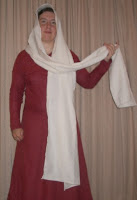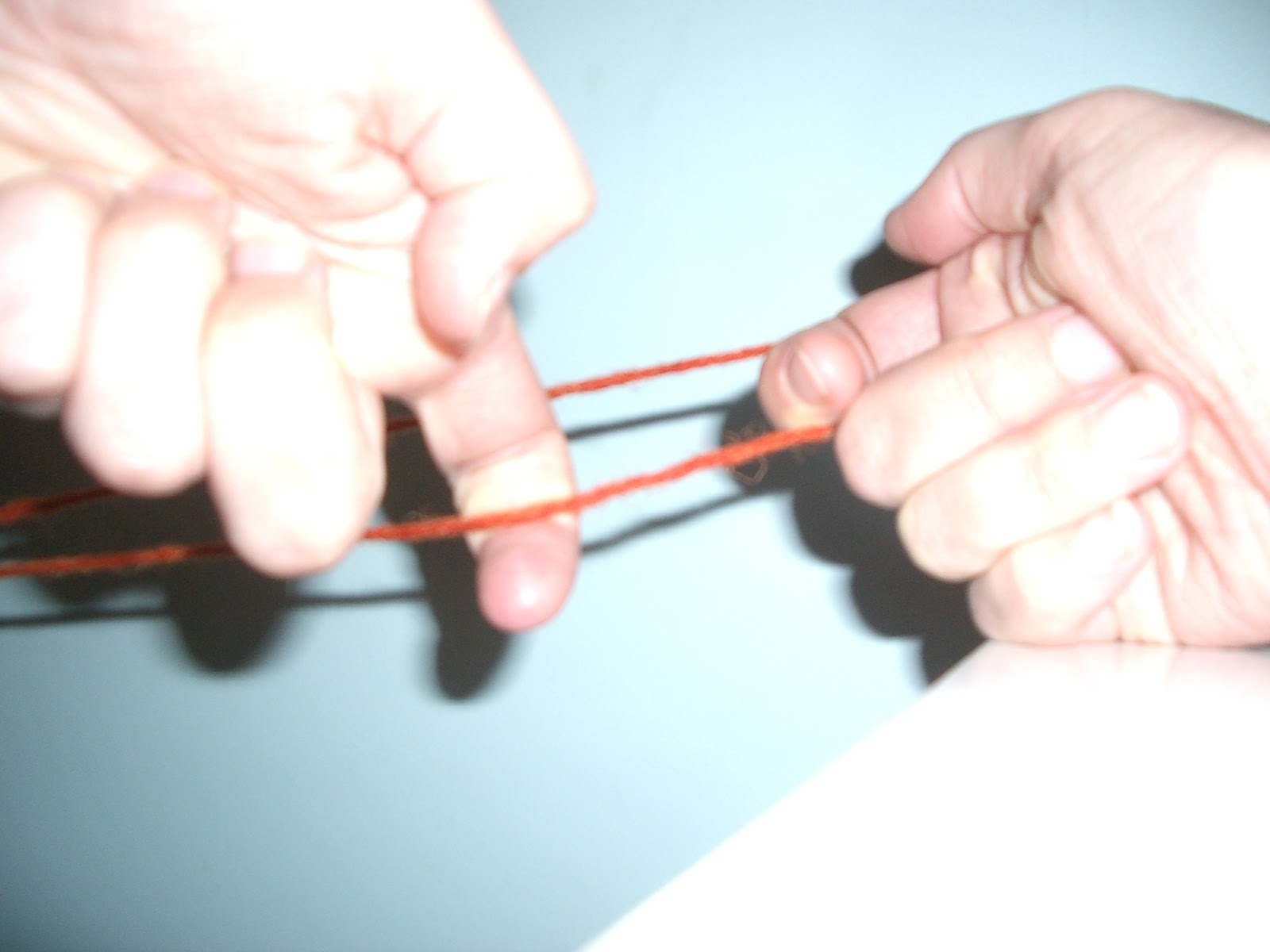Today I present themed links for valentines' day. In fact the theme is love, and gifts of love. I'll look at extant gifts of love, particularly heart shaped objects, and also modern reproductions that you could give your lover.
Extant heart shaped broaches
There are surprising numbers of heart shaped broaches of the medieval period which have been found. The first type I noticed was broaches with an outline of a heart formed in a flat section which allows some of them to have inscriptions (or fake 'pseudo inscriptions') on their surface. This is a beautiful example of the style:
A 13-15thC copper alloy broach with traces of gilding
Some broaches of this style are a simple flat shape of a heart outline with a pin reaching across the heart:
A 13-14th C copper alloy broach
Fancier versions of this style can also be found:
15th C silver gilt broach
15th C gold broach originally enameled, decorated and with inscription.
c1400 gilt broach with inscription and formerly enameled decoration
In contrast, some have the pin diving the badge in two (pointing to the point)- Here are a few examples of these downwards facing pinned shaped broaches:
A 13-14th C copper alloy broach with pseudo inscription
A probably 13-14thC (almost symmetric heart shaped) copper alloy broach
A 'medieval' gilded copper alloy broach with intact pin
13-15th C gilded copper alloy broach with illegible inscription
13th-14th C cast copper alloy broach
These could be much more elaborate, I don't know if these are later, or just more expensive examples:
A 15th C silver gilt broach with inscription on the back
15th C silver gilt broach with inscription and decorative images
14-15th C gold broach with heart shape formed by arms with clasped hands
14-15th C gold heart shaped broach formed by two arms with hands clasping
I find the two orientations of broaches interesting - I understand the broaches that pin across the heart shape, but the pins that reach downwards are more confusing - does this mean the modern idea of a heart being always oriented point
downwards is a more recent development postdating the broaches? Or was the pin worn pointing
downwards thorough the fabric? I think a downwards pointing pin would be
less secure than across if you wished to hold something shut, but I may be wrong, or the pin may be purely decorative, in which case a downwards point may come open, but is less likely to fall off a garment.
The
final broach on this list of fancy broaches with pins across the heart shape also has loops for pendants hanging from it confirming that the heart should face point downwards on this example, but i can find no such clues on the downwards pinned broaches.
Some broaches break all the rules - such as this
14th C copper alloy broach which probably had 2 pins (on horizontal, one vertical). Or this
apparently deliberately asymmetrical heart shaped broach, where all the above examples are symmetrical. This gold 'medieval' broach is also interesting because it is not a flat outline, but more like a wire shape. Whereas this
16th C copper frame broach is also an asymmetric heart shape (although the description says 'pointed oval') with a heart decoration on top - if it is just a pointed oval then this is an example of use of a heart as decoration instead of as shape of the broach. These oddities just prove how much there was a standard form of heart shaped broach though.
Other objects with hearts on them
While we are looking at extant objects with hearts, you could also branch out into objects other than broaches, for example
one item that appears to be a common 14-15th C lover's token (
according to the blurb on this find) is a
heart shaped badge or lover's token, of which there are
several examples, one even betrays it's purpose
with the inscription 'hert be true". while
other badges with hearts might have less specific meaning.
Another gift is a
finger ring either with a
heart shape soldered on to it (and
another) or as
part of a design moulded
onto it (and
another, and
another, in fact a
heart sprouting flowers is
very common, very
very common), while
angel's holding hearts are common too) or a
'fede' ring (and
another, apparently often used a
betrothal rings), or
with an engraved love inscription (and
another, and
another) which are
clear lover's tokens (eg "
all my desire"). This ring uses hearts in what
might be a marriage ring rather than a lover's gift, while
other rings may be more innocent in meaning or
definitely have religious meaning.
There are also a
lot of
15-16th C
spindle whorls decorated with
incised markings including
hearts, or
mostly consisting of
hearts - I wonder if it was a nice gift for a man to give to his female lover? Although
some usages appear more religious than love tokens.
Heart shaped buttons are also a nicely feminine gendered gift of the affordable nature (and
sturdy enough to survive burial so we rediscover it), and there are
plenty of examples from the
15th C (and
another) and many from the 15-17th C
I'm surprised there are not more
thimbles decorated with hearts (this example is even a heart pierced by an arrow - clearly a love allusion) given they are similarly small and gendered gifts.
Looking for traditionally masculine gendered gifts for a man, I am astonished by the number of
15-16th C scabbard chapes (
another and
another and
another and
so many more) which makes me wonder if this was a common love gift or just a popular pattern with manufacturers. While some could be for ladies eating knives, I
think some belong to swords, a clearly gendered item in medieval times.
Personal seals can have lots of
connotations of love because they can be used to make love letters private. I wonder if the owners of these might have had a
separate seal for
sending to their lover that
wasn't the one they
used for their other friends? (they'd have a different seal for business mail) I certainly can't imagine sending your best friend a letter s
ealed with the words "I keep love's secrets" although an
arrow piercing a heart might not provoke comment, while a
seal with a 'sacred heart' is not at all a lover's symbol.
On hearts and love
There appears to have been a fad for heart shaped motifs and lover's
tokens in this shape in the 15th-16 C. That's when most of the above
examples date from. But was the heart motif in use earlier? Did it
symbolise love earlier? The
earlier examples I can find are
rather more ambiguous as to the
extent to which they are deliberate
heart shapes or
have symbology of love, for example a
heart shaped hair pin from 6-11th C Leicestershire.
It mustn't be forgotten that hearts were also used for more ordinary objects, for example as part of a
15-16th C merchant's mark, as
a purse fitting, a
lead weight (and
another) or as a
decorative feature amongst other decoration, for example on a
15-16th C stud, , a
15th-16th C dress tag and a
16th C dress hook, (and
another) on
a book fitting,
vice handle, on various and
decorative mounts and
swivel mounts and suchlike. Heart shaped appears to be a
standard shape for
chafing dish handles (
and so many more). I doubt these chafing dish handles are deliberate uses of a heart, and I wonder how many of the other uses symbolise love? We can only be sure the heart symbolises love when it's use is tied to objects that we know have love symbolism (eg rings) or is accompanied by further imagery that underlines the symbolism (eg an inscription, or the flowers sprouting from a heart symbol).
While the heart as a motif might just have been decorative earlier, or might not have enjoyed popularity as a universal symbol of love, an object that has an incidental heart shape might convey such a meaning to modern reenactors. In the same way there might be many of pre-15th C items which conveyed love to their recipient and maybe even to an audience that today we cannot tell apart from ordinary objects. For example a plain ring without a design of hearts on it might be a love token, but tells us nothing of it's use. Given the rapidity with which the heart shaped objects occur, it seems probable that it was not a society shattering rapid increase in the practice of love token giving that was occurring, but that merely the exact form of the love token changed rapidly with fashion, now enabling us to identify them. Indeed we have plenty of literary references to the
practice of giving love tokens earlier and a
few objects which make their purpose clear. As reenactors, perhaps the exchange of objects with shared meaning between the participants would be better understood by a medieval person than worrying about a specific object type?
Adding a little raunchiness
All these heart symbols are very pretty and pleasing to give to a lover, but what if you'd like to give something a little more suggestive as a lover's token? Rather than a heart shaped object, you might prefer a naughty
"carnival badge", such as
this extant example (these are not exactly work safe)
Or you might wish to be more subtle in your message, such as
this badge shaped as a comb with a pretty design of um, foliage, yes definitely foliage.
I have no proof these were used as love tokens, in fact they seem more likely to have been not, instead being parodies of religious iconography.
Buying reproductions
If you want to buy some reproductions of heart shaped broaches,
mainly medieval has a simple gem studded heart shaped annular and
lorifactor has a 13-14th C heart broach with birds (I'm
sure a number of other retailers have items too that I haven't
spotted).
Mainly medieval also sell 15th C lovers tokens of a
heart crowned and pierced by an arrow, a
heart with flowers sprouting from it, a
crowned heart,
"true love" and
"par amour".
If you are looking for naughty carnival badges, these seem to be much more popular with reproduction suppliers (obviously this takes the fancy of reenactors), with many offerings available (I'm going to number instead of name them to keep this work safe):
1,
2,
3,
4,
5,
6, 7,
8,
9, and
some are also offered by this store, but not on their website.























